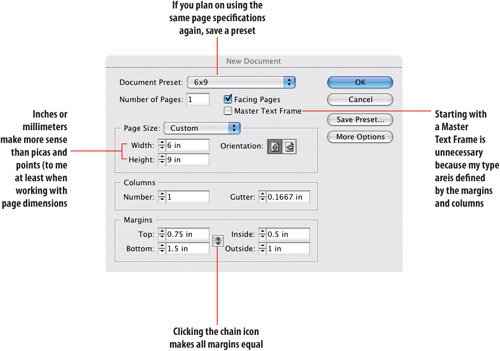Chapter 15. Setting Up Your Document
|
THE FOUNDATIONS OF ANY PAGE DESIGN are the document dimensions: page size, margins, and the number of columns. While all of these can be changed when the document is in progress, there's nothing like getting it right to begin with. Here are some things to consider when creating a new document:
Tip: Standard page sizes US letter, A4, tabloid, etc., are convenient, but the world is full of documents in these sizes. Use them, but choose them intentionally because they offer the best solution for the design you are creating. Don't choose them just because they are the default setting. If you opt for a nonstandard page size, be sure to get a cost estimate from your commercial printer before you commit to designing your publication at that size. It's good to be different, but sometimes being different can come with a big price tag. Figure 15.1. New Document.[View full size image] 
Tip Another nice workflow feature is the ability to save your settings as a preset. Once you've keyed in the values you want, choose Save Preset. Thereafter you can choose the preset name from the Document Preset menu. |








